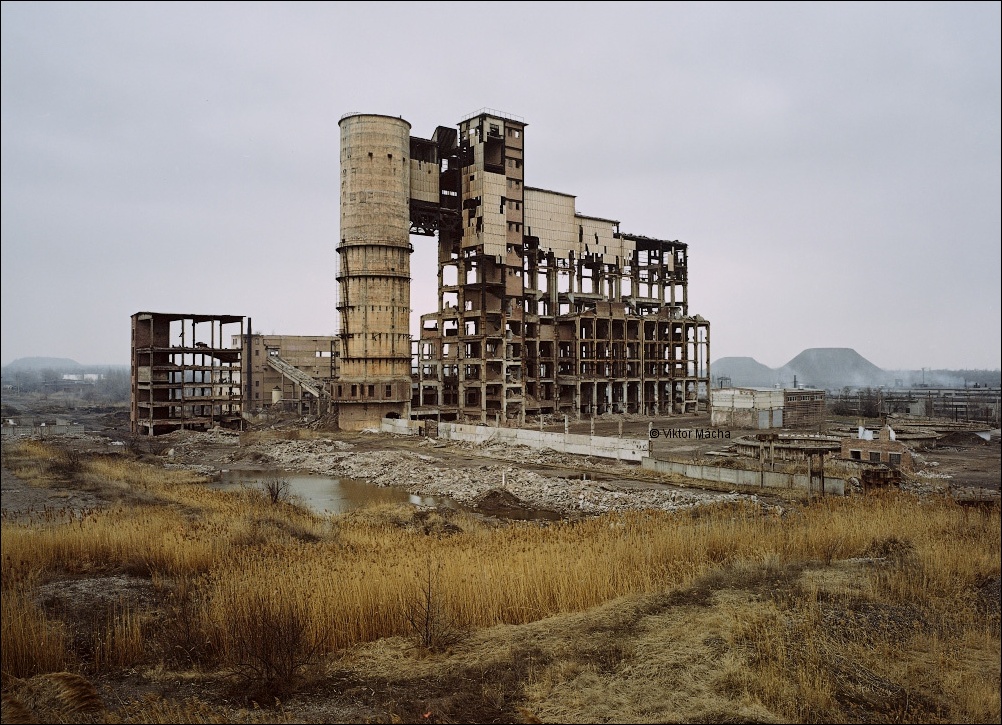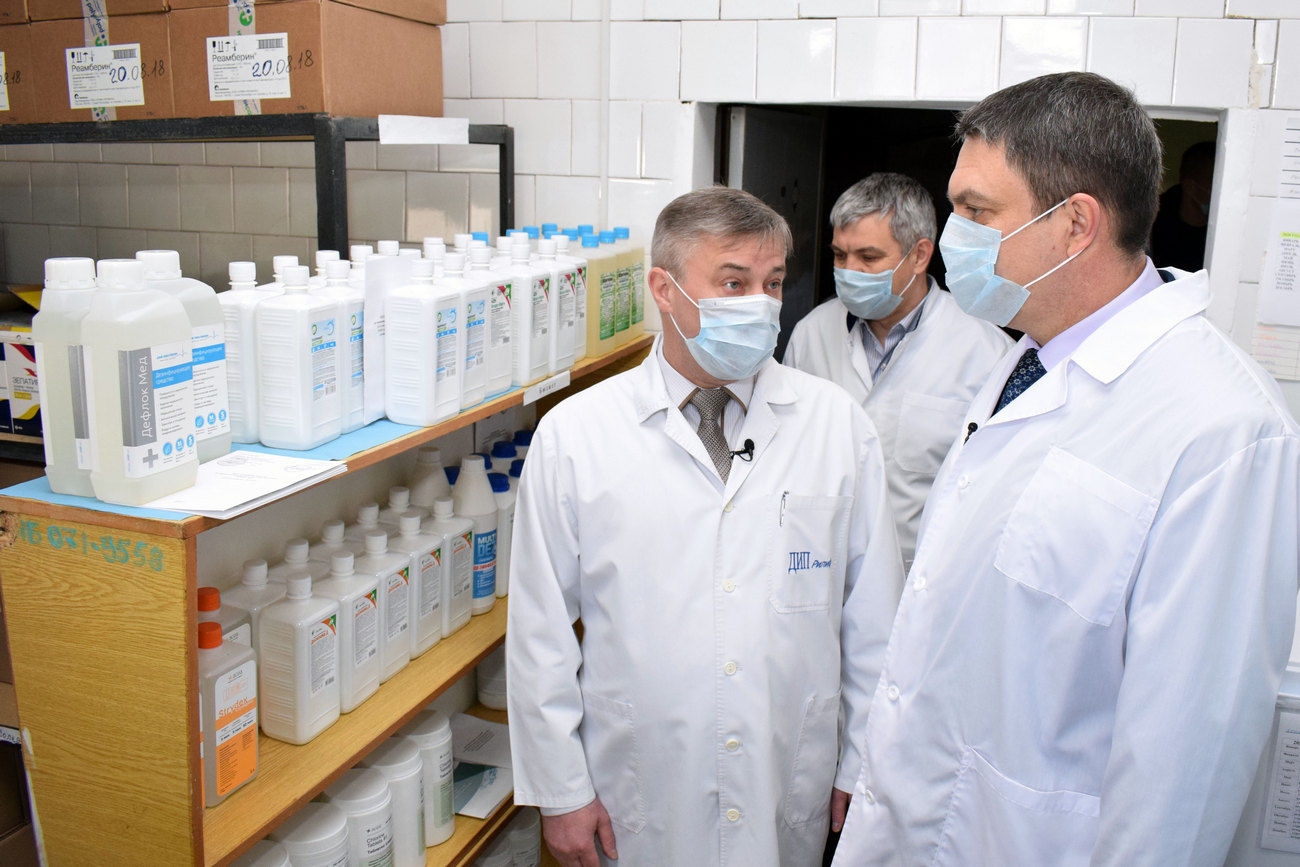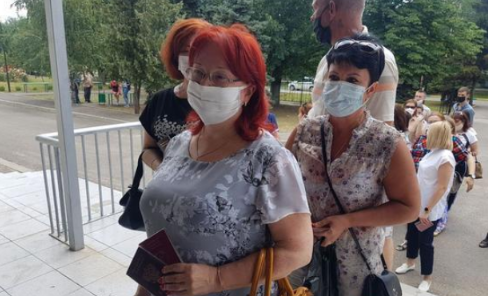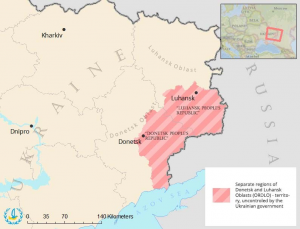
This February, in order to draw public attention to looming natural, environmental, and industrial disasters in the Donbas, the 3P Consortium comprising international and national NGOs engaged in Ukraine held its second conference “Bridge the Gap: Environmental and Industrial Risks in Eastern Ukraine,” co-funded by the EU and the Swedish and French Embassies of Ukraine.
“Civilians living near the contact line continue to suffer from the impacts of natural and industrial/ecological hazards. They are also faced with new challenges such as the COVID-19 pandemic and heightened historic challenges such as those exacerbated by climate change including the uptick of wildfire activity in Eastern Ukraine in summer 2020,” the conference’s report goes.
The conference focused on devising strategies and tools to solve environmental issues in the Donbas. Since there is no viable means to improve or influence any policies or developments in Russian-occupied areas, the participants focused on what local and central governments can and should do in the government-controlled part of the Donbas.
The experts pointed out that Ukraine lacks a national unified environmental monitoring system, having instead a number of fragmented databases maintained by various agencies. Thus, the Ukrainian government should improve environmental monitoring system integration by creating a comprehensive environmental monitoring system. Such data can and should be used at all decision-making points in the Disaster Risk Management cycle.
Another point is that to ensure the health and socioeconomic wellbeing of residents of Eastern Ukraine, the authorities should close coal mines safely and support the livelihoods of those impacted. Additionally, they should ensure improving local business activities and address the issues of illegal coal mining in the areas.
The experts also believe that the decentralization reform that has been ongoing in Ukraine provides opportunities for effective disaster risk management if “adequate resources are allocated, mandates are clarified, and organization figureheads are clearly identified.”
Expert’s comment
Euromaidan Press reached out to Tetiana Kuchma, IMPACT Initiatives Senior GIS Officer, for comment. This is what Tetiana told us.
What environmental issues can become or already are a problem for the population, local economy, nature in the east of Ukraine?

The Donbas has been under significant environmental impact for decades. For example, the coal industry and the coke industry are the main sources of air pollution in the region, with frequent exceedances of maximum permissible concentrations, in particular for aerosols, nitrogen dioxide, and sulfur dioxide.
According to the World Health Organization, the chronic effects of air pollution raise mortality rates from stroke, heart disease, lung cancer, and acute respiratory infections. The satellite data showing the concentration of air pollutants in Ukraine, Kyiv, and part of the Donetsk Oblast stand out very sharply. Air pollution also affects the quality of surface water and soil. One of the factors of soil degradation in the region is actually pollution by heavy metals, which with agricultural products reach the human body and accumulate there, causing a carcinogenic effect:
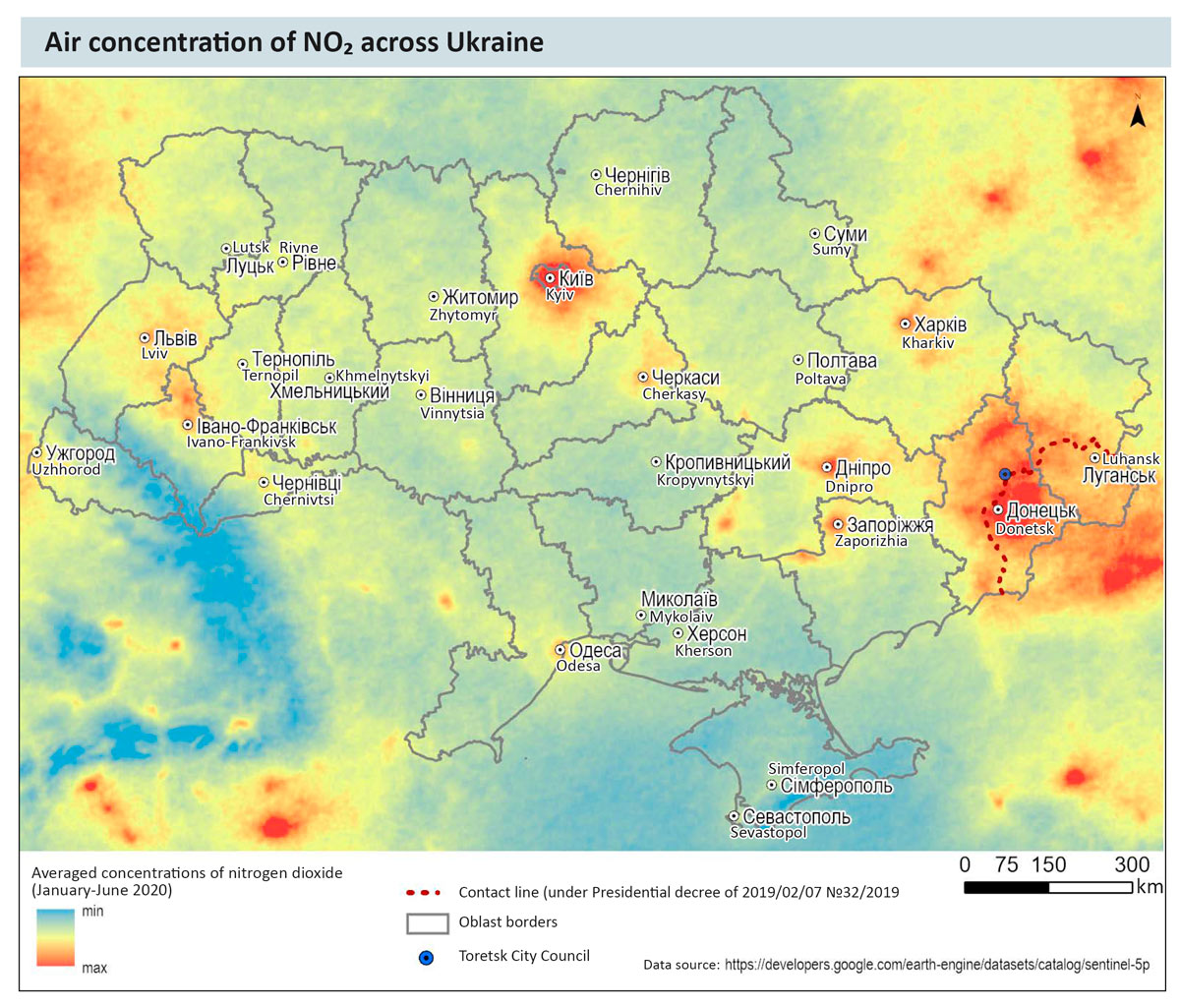
It’s only one example. In general, coal mines, chemical and coke plants, water supply infrastructure (including chlorine-using water treatment plants), landfills and tailing ponds, toxic waste dumps are potentially hazardous to human health and the environment due to hazardous substances and the risk of conflict or improper maintenance.
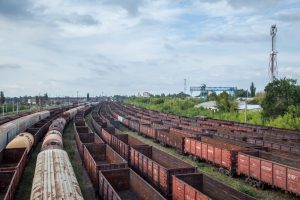
Additionally, most industrial facilities are located within cities, near residential areas of the city, or generally in areas with high population density, for example, the radius of the potential impact of the “Zorya” plant is the whole of Sievierodonetsk, the city with a population of more than 100.000.
- Read also: Donbas on the brink of environmental catastrophe (2017)
Dangerous facilities lie within the 20-km zone along the demarcation line, and, for example, for the period from January to April 2021, when an escalation in hostilities was recorded, we analyzed the number of shellings according to ACLED within a radius of 1 km around industrial facilities, and there were more than 100 such cases, which means the risk of damage to industrial facilities remains extremely high, and the disaster risk reduction measures should be targeted at reducing the risks of this kind.

What is being done in the free part of the Donbas to solve environmental problems, are the local and central governments doing something, and how successful they are?

For me, it is hard to comment on the general picture, the organization in which I work – IMPACT Initiatives – is part of the 3P Consortium for the reduction of risks and vulnerability to disaster risks in eastern Ukraine. We work with local authorities, the units of the State Emergency Service of Ukraine to provide analytical, advisory, and technical support, especially for local communities located near the demarcation line.
Following the decentralization reform, local communities were given broad powers and responsibilities for budgeting, spatial planning, and the development of environmental strategies, as well as risk reduction strategies in the region.
Currently, most representatives of local governments identify the environmental field as paramount and consider it a priority to develop regional environmental strategies and environmental monitoring.
For example, the Popasna Territorial Community was one of the first in the region to develop and adopt the Strategy to Reduce the Disaster Risks in the Popasna Territorial Community for 2021-2027. Their strategy was developed with the participation of the 3P Consortium and USAID’s financial support.
However, an obstacle to the development of effective strategies is the lack of specialists at the local level, the lack of a centralized, open, and permanent system of environmental monitoring, or a unified methodology for environmental risk assessment.
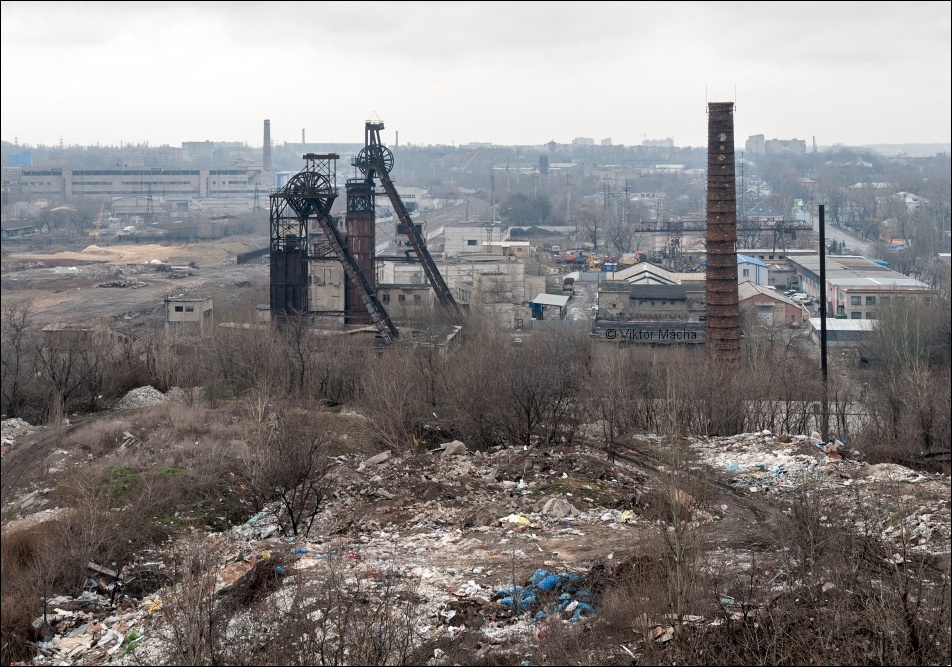
Various Ukrainian agencies often collect and store data in various forms using different methods, which greatly the analysis of those and the decision-making based on the data.
Also according to my experience, when we started the area-based risk assessment for the Toretsk City Council, I perused the news on the city council’s website for the year and most of the updates reported that water supply was cut off for several hours, days, weeks in this area famous for its network of coal mines due to shelling or ground subsidence.
At the level of the central government, it is worth mentioning the initiative of the Ministry of Transport and Communications to create a satellite system for environmental monitoring in non-government-controlled areas, I hope it will be implemented.
Of course, it is never too late, just as it is never too early to start solving environmental issues. Data collection, statistics, including Incidents that take place in the territory not controlled by the government of Ukraine, analysis, understanding of the situation – this is what we must do now and all the time, in order to find ways for reducing the negative impact on the environment now and in the future.
Meanwhile in the Russian-occupied territory
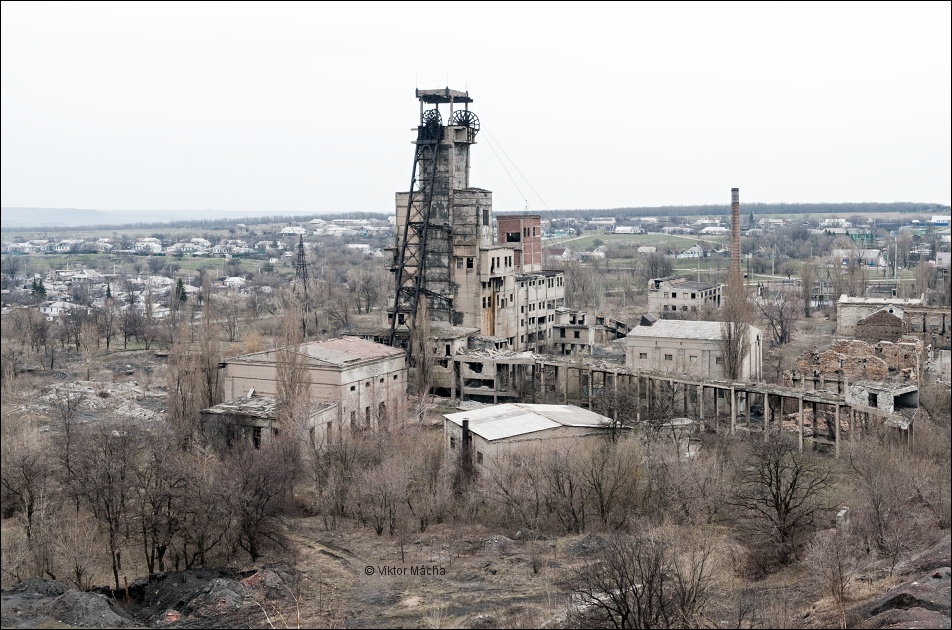
For example, multiple unprofitable coal mines in the Russian-occupied territory were just flooded by merely shutting down pumping equipment without any proper decommissioning. The flooding of the mines changes water levels and contaminates local water bodies with various hazardous substances including heavy metals which may result in a full-fledged environmental disaster.
Plus, among such mines was Yunkom, a Soviet nuclear underground test place, flooded in 2018. Up to this day, there is no reliable data on whether the flooding of the structure created by the nuclear explosion had an impact on local water resources in and around Yenakiieve, where the mine Yunkom is located.
Further reading:
- The rise and decline of Donbas: how the region became “the heart of Soviet Union” and why it fell to Russian hybrid war
- Wave of strikes sweeps over occupied Donbas as coal mines are shut down
- Are the wildfires in eastern Ukraine a form of warfare? This video suggests yes
- Reintegration Costs of Donbas: $22 Billion or More? (2020)
- Donbas without water: The ecology of the east Ukrainian frontline
- Fears of radioactive disaster as Russian proxies plan to flood nuclear test site in Donbas (2018)
- On the verge of disaster: top 5 environmental problems in Ukraine (2019)
- Donbas on the brink of environmental catastrophe (2017)
- Ecological disaster in Ukraine caused by Moscow’s invasion spreads into Russia, experts say (2017)

